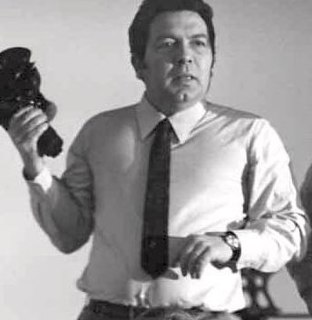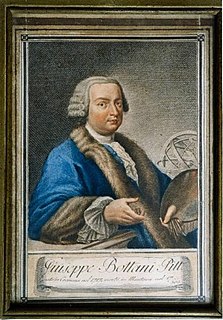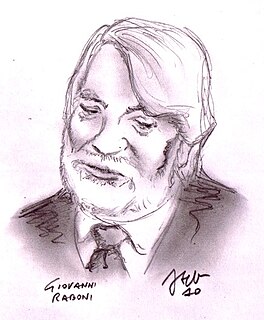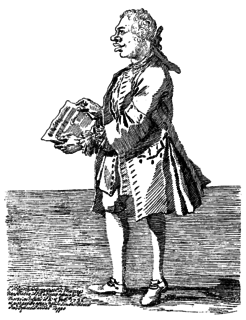Related Research Articles

Eraclio Petri, commonly known as Elio Petri, was an Italian film director, screenwriter, theatre director, and critic associated with the political cinema in the 1960s and '70s. His film Investigation of a Citizen Above Suspicion won the 1971 Oscar for Best Foreign-Language Film, and his film The Working Class Goes to Heaven won the Palme d'Or at the 1972 Cannes Film Festival.

Jacopo da Empoli was an Italian Florentine Reformist painter.

Giovanni Andrea Ansaldo was an Italian painter active mainly in Genoa.

Piermaria Bagnadore, also called Pietro Maria Bagnatori, was an Italian painter, sculptor, and architect of the late-Renaissance period.
Camillo Berlinghieri was an Italian painter of the Baroque period. Born in Ferrara. He trained with Carlo Bononi. Among his paintings was a Gathering of the Manna in San Niccolo; and an Annunciation for Sant Antonio Abbate in Ferrara. His works are chiefly at Ferrara and at Venice, where he was called Il Ferraresino. He died at Ferrara.

Filippo Abbiati (1640–1715) was an Italian painter of the early-Baroque period, active in Lombardy and Turin, together with Andrea Lanzani and Stefano Maria Legnani, he was a prominent mannerist painters from the School of Lombardy. Born in Milan, he was a pupil of the painter Antonio Busca. Alessandro Magnasco was one of his pupils along with Pietro Maggi and Giuseppe Rivola. Ticozzi claims he trained, along with Federigo Bianchi, with Carlo Francesco Nuvolone. Along with Bianchi, he painted the cupola of Sant'Alessandro Martire in Milan. Abbiati also painted a St. John preaching in the Wilderness for a church in Saronno.
Nunzio Ferraiuoli (1661–1735) was an Italian painter of the Baroque period, mainly of landscapes.

Giuseppe Agellio was an Italian painter of the Baroque period. Born in Sorrento, he was a pupil of the painter Cristoforo Roncalli and worked in Rome. He excelled in painting landscape and architecture.

Giovanni di Balduccio was an Italian sculptor of the Medieval period.

Antonio de Bellis was an Italian painter from Naples, active in the Baroque period. Along with Jusepe de Ribera, Bernardo Cavallino and Massimo Stanzioni he was one of the major artists working in Naples in the first half of the seventeenth century, under the influence of the painter Caravaggio.
Antonio Beltrami (1724–1784) was an Italian painter active in the late-Baroque and Neoclassic periods. He was born in Cremona. He was a pupil of Francesco Boccaccino, who emerged from the school of Carlo Maratta. His older brother, Giovanni Battista was an engraver.

Giovanni Francesco Cassioni was an Italian engraver in wood. He was born in Bologna, and made a number of portraits of painters for Carlo Cesare Malvasia to use in his Felsina Pittrice in 1678.

Giuseppe Bottani was an Italian painter active in the Baroque period.

Giovanni Lorenzo Bertolotti (1640–1721) was an Italian painter of the Baroque period, active in Genoa.
Carlo Bozzoni was an Italian painter of the Baroque period. He trained with his father, the painter and engraver, Luciano Bozzoni.
Stefano Ticozzi (1762-1836) was an Italian art historian.

Giovanni Raboni was an Italian poet, translator and literary critic.

Lo frate 'nnamorato is a three-act commedia per musica by Giovanni Battista Pergolesi, to a Neapolitan libretto by Gennaro Antonio Federico, first performed in 1732.

Francesco Corneliani (1740-1815) was an Italian painter, mainly active in a Neoclassic style in his native Milan.
References
- ↑ Bollettino della Società pavese di storia patria, Fratelli Fusi, 1908, Page 344.
- Ticozzi, Stefano (1830). Dizionario degli architetti, scultori, pittori, intagliatori in rame ed in pietra, coniatori di medaglie, musaicisti, niellatori, intarsiatori d'ogni etá e d'ogni nazione' (Volume 1). Milan: Gaetano Schiepatti. p. 153.